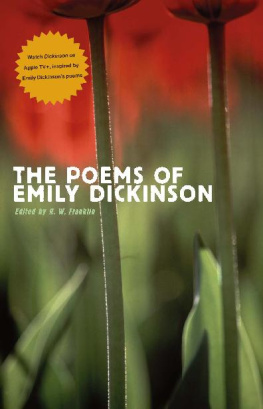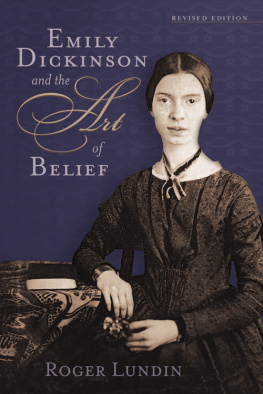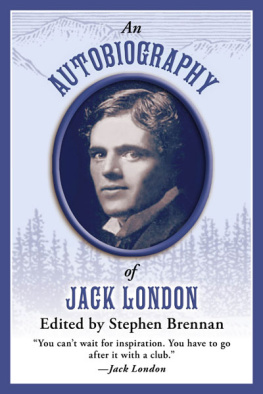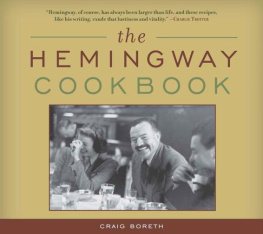
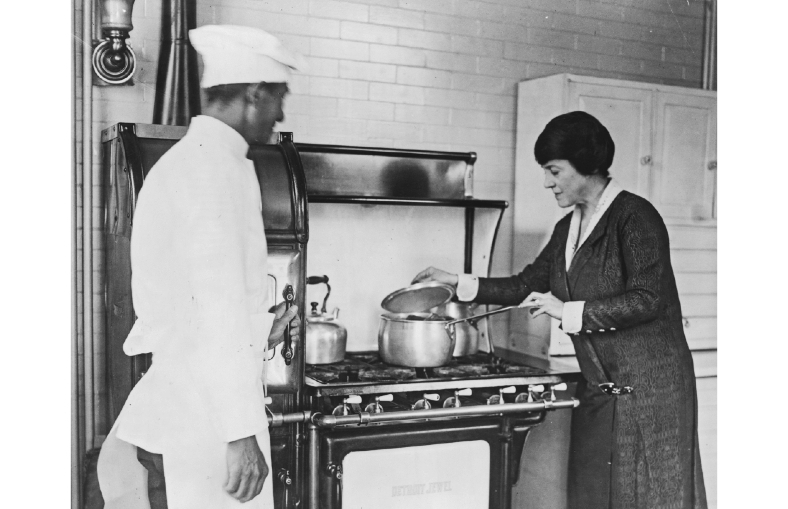
Frontispiece:Mary Roberts Rinehart at stove (LIBRARY OF CONGRESS).
Literary Eats
Emily Dickinsons Gingerbread, Ernest Hemingways Picadillo, Eudora Weltys Onion Pie and 400+ Other Recipes from American Authors Past and Present
Gary Scharnhorst

McFarland & Company, Inc., Publishers
Jefferson, North Carolina
CATALOGUING DATA ARE AVAILABLE
BRITISH LIBRARY CATALOGUING DATA ARE AVAILABLE
e-ISBN: 978-1-4766-1252-2
2014 Gary Scharnhorst. All rights reserved
No part of this book may be reproduced or transmitted in any form or by any means, electronic or mechanical, including photocopying or recording, or by any information storage and retrieval system, without permission in writing from the publisher.
On the cover: Baking ingredients sit on table (Max Oppenheim, Digital Vision/Thinkstock)
McFarland & Company, Inc., Publishers
Box 611, Jefferson, North Carolina 28640
www.mcfarlandpub.com
For Dieter, Regina, Karin, Udo, Nadine, Walter,
Ursula, Karl, Gnter, Dietmar and Kurt
Acknowledgments
Unpublished Brownie recipe by Elizabeth Bishop. Copyright 2013 by the Alice H. Methfessel Trust. Printed by permission of Farrar, Straus and Giroux, LLC, on behalf of the Elizabeth Bishop Estate. Printed from manuscript in the Elizabeth Bishop Papers at Vassar College, folder 112.13, courtesy of Archives and Special Collections Library, Vassar College.
Caf Ellison Diabolique by Harlan Ellison(r). Copyight 1973, 1991 by Harlan Ellison. Renewed, 2001, by the Kilimanjaro Corporation. Reprinted by arrangement with, and permission of, the Author and the Authors agent, Richard Curtis Associates, Inc., New York. All rights reserved. Harlan Ellison is a registered trademark of the Kilimanjaro Corporation.
Case of the Caretakers Cat Cocktail reprinted by permission of the Erle Stanley Gardner Trust.
Recipes for Green Chile Sauce, Huevos Rancheros, and Mexican Summer Soup from The Aficionados Southwestern Cooking by Ronald Johnson are copyright 1968 by the Literary Estate of Ronald Johnson and reprinted with permission.
Crab Nebula and Primitive Chocolate Mousse copyright 1973, 2001 by Ursula K. Le Guin; first appeared in Cooking Out of This World; reprinted by permission of the author and the authors agents, the Virginia Kidd Agency, Inc. Liriv Metadi or Valley Succotash copyright 1985 by Ursula K. Le Guin; first appeared in Always Coming Home; reprinted by permission of the author and the authors agents, the Virginia Kidd Agency, Inc.
Recipes for Veal Cutlets with Tomato Sauce and Vegetable Soup by Fanny Longfellow reprinted with permission from Early American Cooking: Recipes from Americas Historic Sites by Evelyn Beilenson, published in 1985 by Peter Pauper Press, Inc., White Plains, New York, U.S.A. Used by permission. www.peterpauper.com.
Eggs la Nabocoque by Vladimir Nabokov. Copyright 1972 by Vladimir Nabokov, courtesy of the Vladimir Nabokov Archive at the Berg Collection, New York Public Library. Used by permission of the Wylie Agency, LLC.
Recipes for Bread Pudding, Chicken Loaf, Corn and Cheese Fondue, Jello Salad, Swedish Meatballs by Lorine Niedecker reprinted with permission of the Hoard Historical Museum, Ft. Atkinson, Wisconsin (item number 002.3.8).
All Marjorie Kinnan Rawlings recipes from Cross Creek Cookery, copyright 1942 by Marjorie Kinnan Rawlings, copyright renewed 1970 by Norton Baskin. Used by permission of Brandt and Hochman Literary Agents, Inc. All rights reserved.
Recipe for Easy Peach Cobbler from Dori Sanders Country Cooking by Dori Sanders. Copyright 1995 by Dori Sanders. Reprinted by permission of Algonquin Books of Chapel Hill. All rights reserved.
Gormeh Salzee reprinted by permission of the Estate of William Stafford.
Recipe for Grits by Tennessee Williams. Copyright 1981, 2012 by the University of the South. Reprinted by permission of Georges Borchardt, Inc., on behalf of the Tennessee Williams Estate. All rights reserved.
Conrad Aikens poem used by permission of Brandt and Hochman Literary Agents, Inc. All rights reserved.
How to Make Rhubarb Wine from Sure Signs: New and Selected Poems, by Ted Kooser, copyright 1980. Reprinted by permission of the University of Pittsburgh Press.
Preface
In The Custom-House, the introduction to The Scarlet Letter (1850), Nathaniel Hawthorne reminisced about a gourmand in Salem, Massachusetts, with whom he was acquainted:
It always pleased and satisfied me to hear him expatiate on fish, poultry, and butchers meat, and the most eligible methods of preparing them for the table. His reminiscences of good cheer, however ancient the date of the actual banquet, seemed to bring the savor of pig or turkey under ones very nostrils. There were flavors on his palate that had lingered there not less than sixty or seventy years, and were still apparently as fresh as that of the mutton chop which he had just devoured for his breakfast. I have heard him smack his lips over dinners, every guest at which, except himself, had long been food for worms. It was marvelous to observe how the ghosts of bygone meals were continually rising up before himnot in anger or retribution, but as if grateful for his former appreciation, and seeking to reduplicate an endless series of enjoyment, at once shadowy and sensual: a tenderloin of beef, a hind quarter of veal, a sparerib of pork, a particular chicken, or a remarkably praiseworthy turkey.1
Hawthornes attention to culinary detail is not unusual. Though he was at best an indifferent cook, he was a lusty eaterlike many other American writers whose works are filled with references to food, its preparation and consumption. At the other extreme from Hawthorne, Marianne Moore once served her fellow poet Donald Hall a minimalist lunch:
On a tray she placed three tiny paper cups and a plate. One of the cups contained about two teaspoons of V-8 juice. Another had about eight raisins in it, and the other five and a half Spanish peanuts. On the plate was a mound of Fritos, and when she passed them to me she said, I like Fritos. Theyre so good for you, you know.2
Titles such as Breakfast at Tiffanys, Naked Lunch, and Dinner at Eight are rife in American literature, and even Washington Irvings title Salmagundi alludes to a salad dish. The poet Vachel Lindsay bartered volumes of his poetry for food, in particular Rhymes to Be Traded for Bread (1912).
Yet until now no one has compiled a comprehensive collection of recipes for the dishes American writers are known to have consumed. One reason is that, historically, Americans are presumed to have no distinctive cuisine. According to the British traveler Frances Trollope in her Domestic Manners of the Americans (1832), Americans rarely dine in society, except in taverns and boarding houses and eat with the greatest rapidity and in total silence.3 Fast food, it seems, was not a twentieth-century invention. Two years before the publication of his novel The Virginian (1902), Owen Wister lamented the haste with which passengers were expected to eat their meals at stops along the railway in his story Twenty Minutes for Refreshments. James Fenimore Cooper remarked in
Next page



